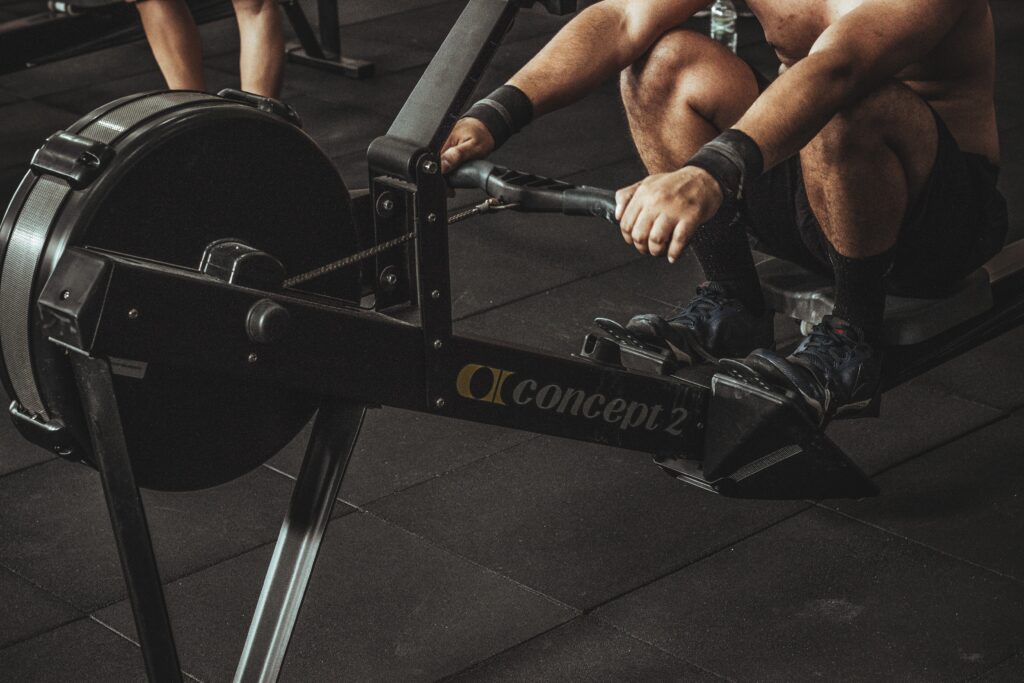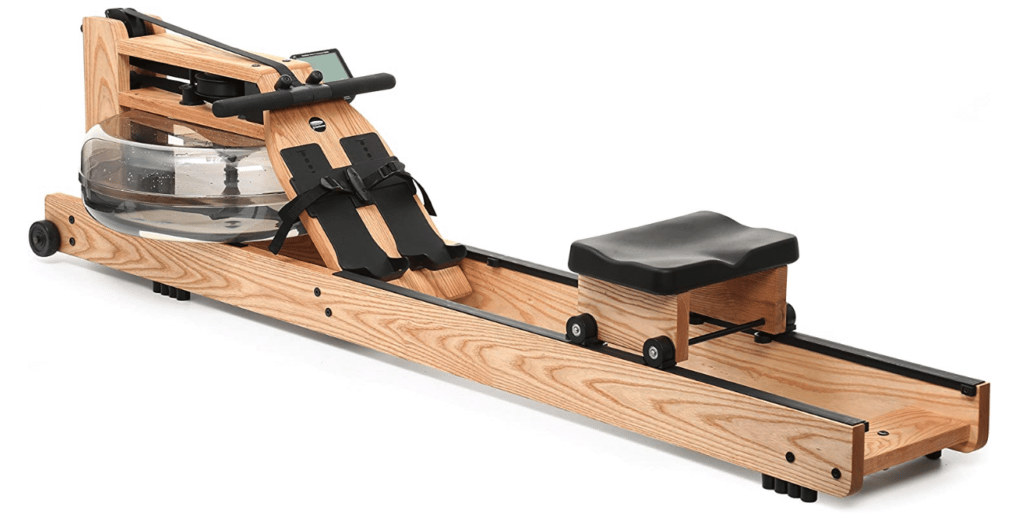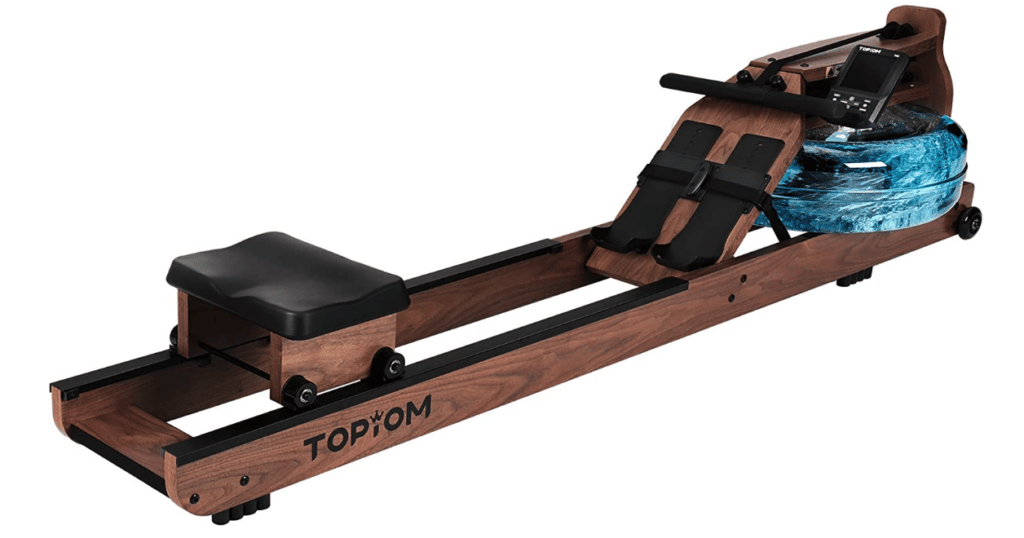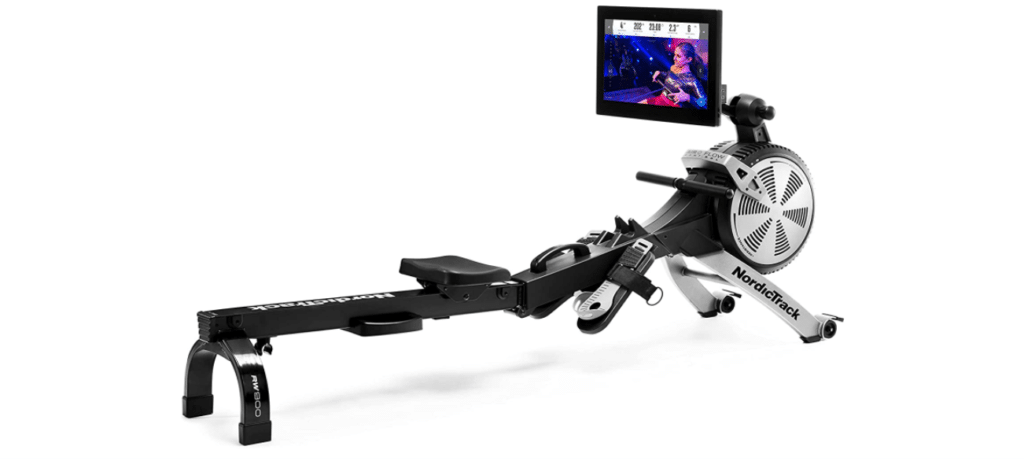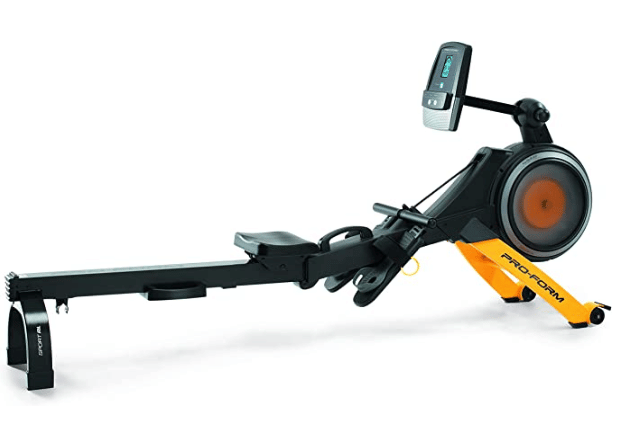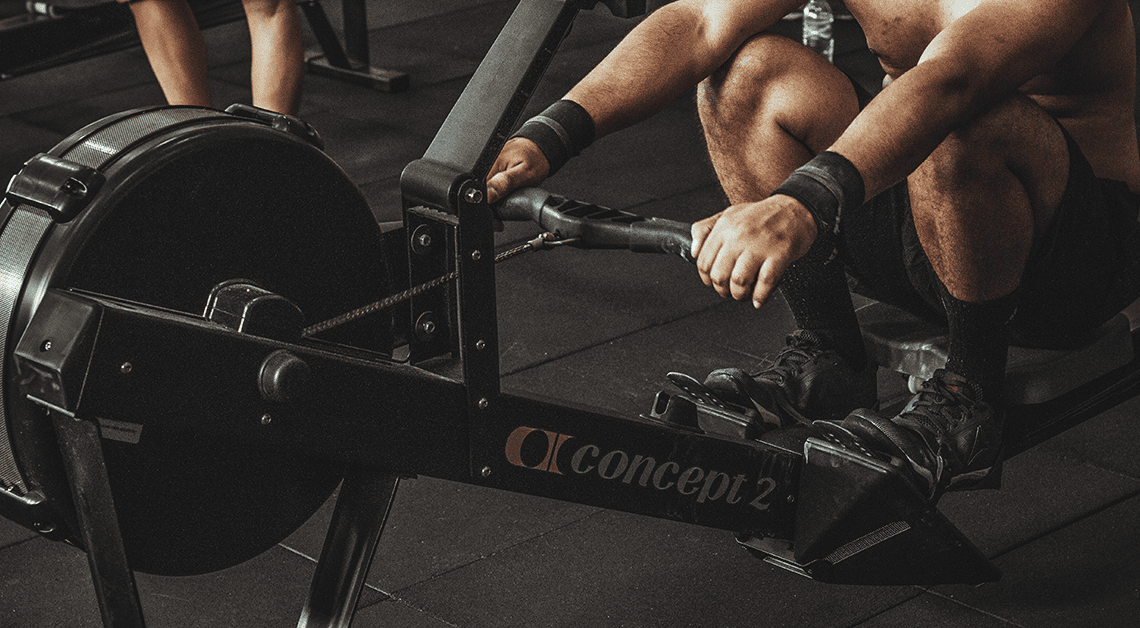
Rowing machines, also known as indoor rowers or ergometers, are pieces of exercise equipment that simulate the act of rowing a boat. They typically consist of a sliding seat, a set of foot pedals, and handles attached to a resistance mechanism. Rowing machines provide a full-body workout that targets the muscles in the legs, arms, back, and core.
When using a rowing machine, you exercise by pulling on the handles to simulate the motion of rowing, while the resistance mechanism provides a level of difficulty that can be adjusted to suit your fitness level. Rowing machines can be a great way to improve cardiovascular fitness, as they provide a low-impact cardio workout that raises the heart rate and burns calories. They can also help to build strength and endurance in the upper and lower body muscles.
In addition to the physical benefits, rowing machines can also provide mental benefits, as they can help to reduce stress and improve mental clarity. They can also be a fun and engaging way to get in a workout, as they can be used in a variety of settings, including at home or in the gym.
Don’t feel like reading this whole article? Here’s the summary:
Water rowing machines simulate the natural feel and resistance of rowing on open water, and they make the swishing sound of real water rowing. Magnetic rowing machines, on the other hand, offer multiple resistance levels and are much quieter to use. Both types of rowing machines can provide a great rowing experience, and it ultimately comes down to personal preference which one you choose. Some people may prefer the natural feel and sound of a water rower, while others may prefer the versatility and quiet operation of a magnetic rower.
Two Main Types Of Rowing Machines: Water Rowers And Magnetic Rowers
When shopping for a rowing machine, you’ll likely come across two main types: water rowers and magnetic rowers.
Water rowers use a flywheel and water resistance to provide a rowing experience that is similar to rowing on the water. The resistance level can be adjusted by changing the amount of water in the flywheel, which is located in a tank at the front of the machine. Water rowers tend to be quieter and smoother in operation than other types of rowing machines, and some people find the sound of the water to be calming and immersive. Water rowers also tend to be more expensive than other types of rowing machines. Finally, water rowers have a much more ‘classic’ look about them than magnetic rowers.
Magnetic rowers use a flywheel and magnetic resistance to provide a rowing experience that is similar to rowing on the water. The resistance level can be adjusted by changing the strength of the magnetic field, which is controlled by a dial or buttons on the machine. Magnetic rowers tend to be more affordable than water rowers, and they are generally easy to use and maintain. However, some people may find that they are not as smooth or quiet as water rowers.
Magnetic Rowing Machine Advantages
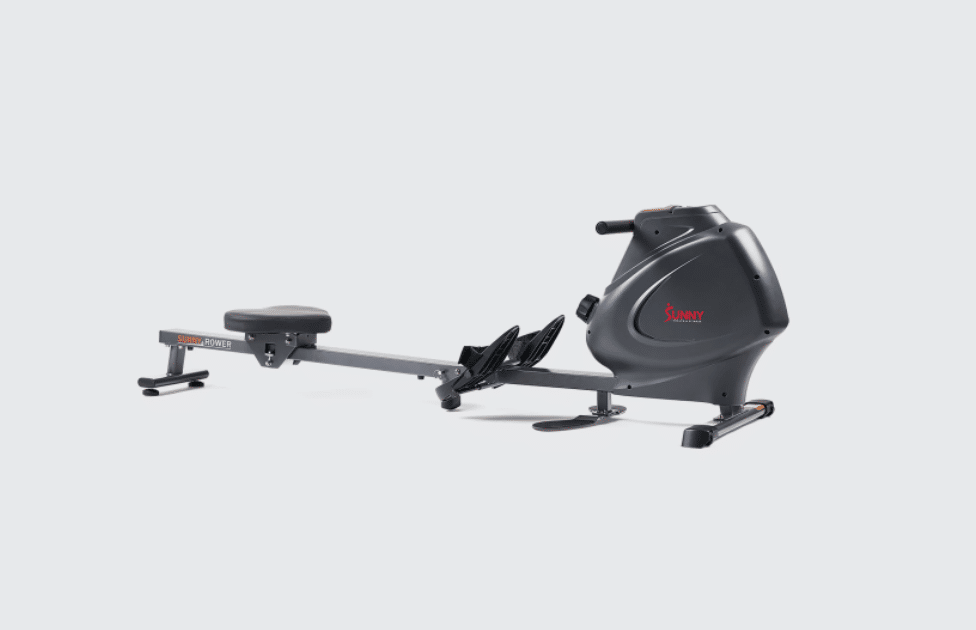
- SOUND: Magnetic rowing machines are known for their quiet operation and are generally the quietest type of rowing machine. They often operate almost silently, making them a good option for home workouts where noise may be a concern.
- SIZE: Magnetic rowing machines are generally smaller and more compact than water rowers, making them a good option for people with limited space. They may also be foldable, which enables easy storage when the machine is not in use.
- RESISTANCE: Magnetic rowing machines offer a broad spectrum of resistance levels, making them suitable for people of all fitness levels. The resistance level can be adjusted by changing the strength of the magnetic field, which is controlled by a dial or buttons on the machine. Some magnetic rowers may also have a “manual” setting, which allows you to adjust the resistance level manually by increasing or decreasing the speed of your rowing strokes.
- MAINTENANCE: Magnetic rowing machines require minimal maintenance, making them easy to care for. They only need to be wiped down and have their bolts and screws checked occasionally. If anything is loose, you can tighten it as needed. Overall, magnetic rowing machines are considered to be low-maintenance and easy to use.
Magnetic Rowing Machine Disadvantages
- ROWING FEEL: Magnetic rowing machines do not simulate the sensation of rowing on the water in the same way that water rowers do. Water rowers use water resistance and a hydrofan to create a more natural rowing feel and sound, while magnetic rowers use magnetic resistance to provide a rowing experience. Some people may prefer the natural feel and sound of a water rower, while others may not mind the difference and may prefer the versatility and quiet operation of a magnetic rower.
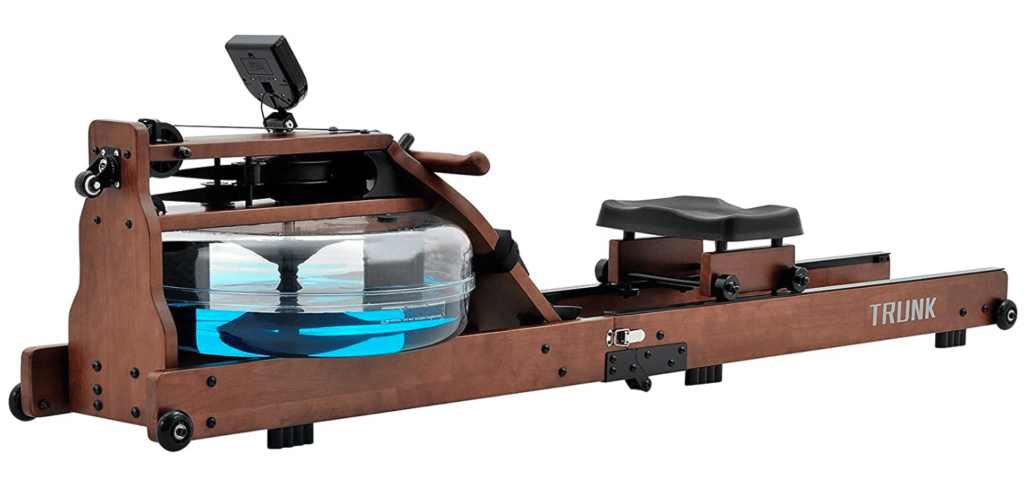
Water Rowing Machine Advantages
- QUIETER THAN AIR ROWERS, BUT NOT AS QUIET AS MAGNETIC ROWERS: It is generally accurate to say that water rowing machines operate fairly quietly. They tend to be quieter than air rowers, which use a fan for resistance and can be quite loud, but they may be slightly noisier than magnetic rowers due to the sloshing of water in the tank. Some people may find the sound of the water to be calming and immersive, while others may prefer the near-silent operation of a magnetic rower.
- SMOOTH ROWING: Water rowing machines offer a smooth rowing action and provide consistent, continuous resistance throughout the stroke cycle. This can make for a more realistic and immersive rowing experience that is similar to rowing on the water.
- THE WOOSH: Water rowing machines make a “whooshing” sound due to the motion of the water, which some people may find soothing to their ears. However, this sound may not be appealing to everyone, and some people may prefer the quiet operation of a magnetic rower.
Magnetic Rowing Machine Disadvantages
- PRICE: It is generally accurate to say that water rowing machines tend to be more expensive than other types of rowing machines. This is because they use a more complex resistance system that involves a flywheel and water tank, which can add to the cost of the machine. Water rowers may also have additional features such as a built-in sound system or a video screen that displays workout data or streaming content, which can also increase the cost.
- SIZE: Water rowing machines are also generally larger than other types of rowing machines. This is due to the presence of the water tank at the front of the machine, which is used to hold the water used for resistance. The water tank can add several inches to the length of the machine, and it is typically located near the foot pedals. However, it is worth noting that water rowers can also come in compact sizes that are similar in size to magnetic rowers.
The Main Similarities Between The Two Types Of Rowing Machines
Rowing machines, whether they be water or magnetic, serve the same purpose: to provide a rowing workout and track workout data. Both types offer a low-impact, full-body workout that can improve cardiovascular health and help individuals achieve their fitness goals, such as increased cardiorespiratory endurance or weight loss. They are suitable for people of all fitness levels, including beginners.
Size
Water rowers and magnetic rowers tend to be similar in size. Both types of rowing machines typically have a sliding seat, a set of foot pedals, and handles attached to a resistance mechanism. They also typically have a display panel that shows workout data such as time, distance, strokes per minute, and calories burned.
Water rowers may be slightly larger overall due to the presence of a tank at the front of the machine that holds the water used for resistance. This tank is usually located near the foot pedals and can add several inches to the length of the machine. However, water rowers can also come in compact sizes that are similar in size to magnetic rowers.
Overall, both water rowers and magnetic rowers are typically designed to be compact and portable, so they can be used in a variety of settings, including home gyms and small workout spaces. It is worth noting that both types of rowing machines may require some additional space around them for proper use, as you will need to be able to fully extend your legs during the rowing motion.
Resistance
Water rowers and magnetic rowers both use resistance to provide a rowing experience that is similar to rowing on the water. However, the type of resistance and the way it is adjusted differ between the two types of rowing machines—more on that below.
The Main Differences Between Water Rowing Machines And Magnetic Rowing Machines
The main difference between water rowers and magnetic rowers is the type of resistance used to provide the rowing experience. Water rowers use water resistance, while magnetic rowers use magnetic resistance. Water rowers tend to be more expensive and smoother in operation, while magnetic rowers tend to be more affordable and easy to use. But there are a few minor differences worth discussing, as well. First, some more detail on the resistance note—
How they work
One major difference between water rowers and magnetic rowers is the mechanism by which they provide resistance.
Water rowers have a large water tank with a hydrofan inside. When you pull on the handles of the rower, the fan creates resistance within the tank by moving the water.
On the other hand, magnetic rowing machines create resistance using magnets, or what are known as Eddy currents. These are magnetic currents created by opposing magnetic fields. When you adjust the resistance setting on a magnetic rower, the magnet moves farther away from or closer to the flywheel. The closer the magnet is to the flywheel, the more it slows down, which increases the resistance.
Resistance
Water rowers and magnetic rowers both use resistance to provide a rowing experience, but the type of resistance and the way it is adjusted differ between the two types of rowing machines. Water rowers use water resistance that can be adjusted by changing the amount of water in the flywheel, while magnetic rowers use magnetic resistance that can be adjusted by changing the strength of the magnetic field. Additionally, water rowing machines can provide an unlimited range of resistance levels. The resistance on a water rower is user-dependent, meaning that it is determined by the speed at which you row. The faster you row, the more resistance you create in the water tank. There is no damper or dial to manually change the resistance on a water rower.
Water rowers use a flywheel and water resistance to provide a smooth and realistic rowing experience. The resistance level can be adjusted by changing the amount of water in the flywheel, which is located in a tank at the front of the machine. The more water that is added to the tank, the greater the resistance will be. Water rowers tend to offer a wide range of resistance levels, from very light to very heavy, making them suitable for people of all fitness levels.
Magnetic rowers use a flywheel and magnetic resistance to provide a rowing experience that is similar to rowing on the water. The resistance level can be adjusted by changing the strength of the magnetic field, which is controlled by a dial or buttons on the machine. Magnetic rowers tend to offer a range of resistance levels, but the range may not be as wide as that of water rowers. Some magnetic rowers may also have a “manual” setting, which allows you to adjust the resistance level manually by increasing or decreasing the speed of your rowing strokes.
Aesthetics
Water rowers tend to have a more traditional or classic aesthetic, with a wooden frame and a tank at the front that holds the water used for resistance.
Water rowers are often designed to look like wooden boats, with a wooden frame and a tank at the front that holds the water used for resistance. The wood used in water rowers can vary in color and finish, ranging from natural wood tones to more colorful, painted finishes. Some water rowers may also have additional features such as a built-in sound system or a video screen that displays workout data or streaming content.
Magnetic rowers, on the other hand, are often made of metal or plastic and may have a more modern or industrial appearance. They typically have a sleek and streamlined design, with a flywheel and resistance mechanism located at the front of the machine. Magnetic rowers may also have a display panel that shows workout data such as time, distance, strokes per minute, and calories burned.
How They Feel And Sound
One advantage of water rowers is that they can provide a more natural rowing feel that is similar to rowing on the open water. Since the tank on a water rower is full of water, you will also hear a whooshing or sloshing sound when using the machine, which can add to the overall rowing experience for some people.
Noise level is another factor to consider when choosing a rowing machine. Water rowers can be slightly noisier than magnetic rowers due to the sloshing of water in the tank, while magnetic rowers tend to be the quietest type of rowing machine. Some magnetic rowers are almost silent in operation. It is worth noting that both water rowers and magnetic rowers are generally much quieter than air rowers, which use a fan for resistance and can be quite loud.

Maintenance
Another factor to consider when choosing a rowing machine is the level of maintenance required. Water rowers generally require more maintenance than magnetic rowers. Water rowers need to be emptied and cleaned periodically to prevent the growth of mold in the tank. You will also need to add chlorine tablets to the water every six months to two years.
Magnetic rowers, on the other hand, require minimal maintenance. They only need to be wiped down and have their bolts and screws checked occasionally. If anything is loose, you can tighten it as needed. In general, magnetic rowers are considered to be low-maintenance and easy to care for.
The Aesthetics Of Water Rowers Vs Magnetic Rowers
You might choose a rower based on aesthetic alone, which is perfectly legit. Water rowers tend to have much more of a natural look—it’s not just the water, but the natural wood materials you often see. Water rowing machines will tend to look like the following, and fit in well on wood flooring, in a home office, or another space where you hang out:
The Iron Company Water Rower. Buy it on Amazon here, and read our review of it here.
The Topium Water Rowing Machine. Buy it on Amazon here, and read our review of it here.
The Trunk Water Rowing Machine. Buy it on Amazon here, and read our review of it here.
As we wrote above, water rowing machines often blend in much better with your actual living spaces, and don’t look like an eyesore.
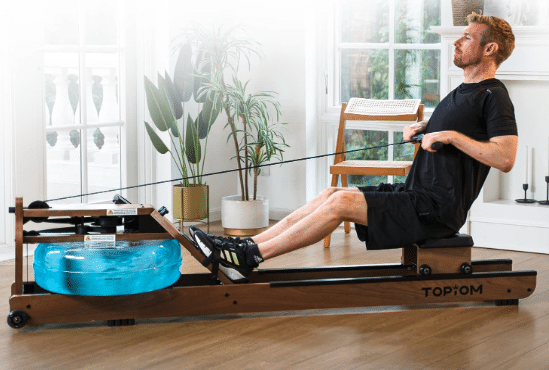
On the other hand, magnetic rowers tend to look more modern, technical, and frankly, metallic. They’re often sleek, appear high tech, come with LED screens for tracking performance (though you can find those on water rowers as well), and feel like they belong in a bona fide garage gym or membership gym.
This is the Hydrow Wave Rowing Machine. Buy it on Amazon here and read our review of it here.
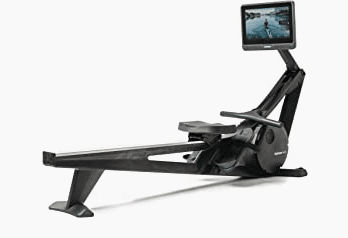
This is the NordicTrack Smart Rower. Buy it on Amazon here and read our review of it here.
This is the Proform Sport RL Folding Rower. Buy it on Amazon here and read our review of it here.
As we wrote above, magnetic rowers look much more industrial, like a modern piece of gym equipment.
